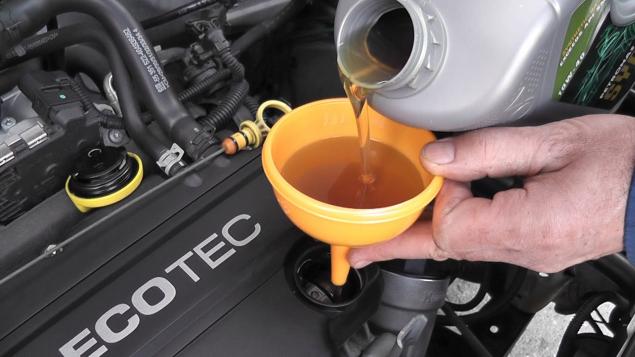356
Motor oils: purpose, functions, varieties
Internal combustion engines require regular oil change, which in the engine performs functions such as reducing friction of parts, preventing the likelihood of their overheating. It also contributes to increasing the service life of the ICE. The question of choosing a lubricant should be approached responsibly so that as a result, it is not necessary to prematurely “capitalize” the engine. Choosing lubricants, you need to pay attention to some important features. Let's talk more about them.

Why oil is poured into the engine
The main purpose of motor oil in the engine is lubrication of rubbing and rotating parts. This need is due to the fact that during the friction of metal parts against each other, their wear occurs. However, this is not the only function that lubricants perform in the engine. Additional functions also include:
Motor oil plays an important role in engine design, so manufacturers of such substances are constantly working to improve the compositions. The quality of the liquids used depends on the resource of the ICE.

During operation, oil is produced, which over time loses its properties, ceases to perform functions. What this is fraught with for ICE, it is easy to imagine, based on the above advantages. The frequency (periodicity) of replacement of motor oils depends on various factors. The period is from 5 to 15 thousand km of run. If you do not adhere to these regulations, then the ICE work life will decrease, and this will certainly lead to the fact that at one point it will simply require repair or even replacement.
Main types of motor oils
Lubricating liquids come in different types. They differ in such features as quality, the presence of appropriate additives and additives (for example, molybdenum), purpose and composition. Based on the basis from which motor oils are produced, they are classified into the following varieties:
Types of lubrication are classified depending on the types of engines for which they are intended. So, they are distinguished for gasoline, diesel and turbocharged units. Each type has its own characteristics, the product is not interchangeable.
Source: maslobaza.com

Why oil is poured into the engine
The main purpose of motor oil in the engine is lubrication of rubbing and rotating parts. This need is due to the fact that during the friction of metal parts against each other, their wear occurs. However, this is not the only function that lubricants perform in the engine. Additional functions also include:
- prevention of overheating of parts, which occurs when the fuel-air mixture is burned. Most of the heat energy from the piston group is diverted using lubrication;
- removal of contaminants that are formed in the process of mechanical wear of parts. Passing through the filter, small particles are trapped. This eliminates the likelihood of their circulation through the system;
- neutralization of active compounds. The oil helps to remove soot, soot and other types of contaminants formed during the combustion of the fuel-air mixture;
- exclusion of the likelihood of oxidative processes. Thanks to lubrication, corrosion in the engine is prevented.
Motor oil plays an important role in engine design, so manufacturers of such substances are constantly working to improve the compositions. The quality of the liquids used depends on the resource of the ICE.

During operation, oil is produced, which over time loses its properties, ceases to perform functions. What this is fraught with for ICE, it is easy to imagine, based on the above advantages. The frequency (periodicity) of replacement of motor oils depends on various factors. The period is from 5 to 15 thousand km of run. If you do not adhere to these regulations, then the ICE work life will decrease, and this will certainly lead to the fact that at one point it will simply require repair or even replacement.
Main types of motor oils
Lubricating liquids come in different types. They differ in such features as quality, the presence of appropriate additives and additives (for example, molybdenum), purpose and composition. Based on the basis from which motor oils are produced, they are classified into the following varieties:
- Mineral. They are obtained from oil by distillation. Of the advantages it is necessary to highlight only the fact that mineral compositions are inexpensive. Use them for foreign cars even with a large mileage is not recommended. In the cold, they quickly thicken, which leads to the inability to start the engine.
- Synthetic. This is the opposite of mineral substances. They are obtained by synthesis of petroleum derivatives. Of the negative factors, only a high cost should be highlighted. Otherwise, these oils meet all the requirements of modern cars.
- Semi-synthetic. They are obtained by mixing mineral and synthetic products. The result: something between high-quality synthetics and cheap mineral water. This has a positive effect on the cost of products, but reduced performance.
Types of lubrication are classified depending on the types of engines for which they are intended. So, they are distinguished for gasoline, diesel and turbocharged units. Each type has its own characteristics, the product is not interchangeable.
Source: maslobaza.com
Devoted cat unmistakably determines that the husband is approaching the house, goes to meet him at the door a few minutes before the key in the lock turns.
Sushi chef showed how to make sushi at home so that the rolls turned out perfect, like in a restaurant























